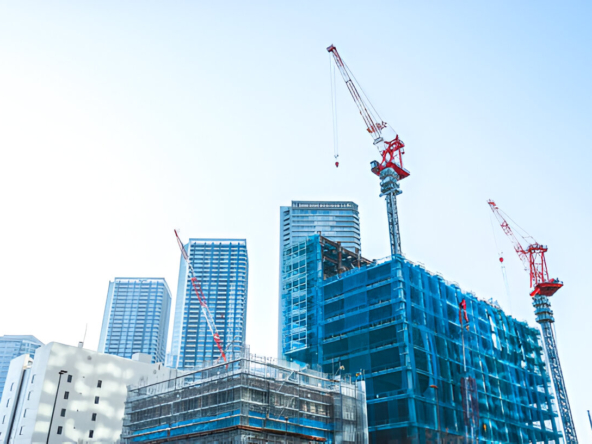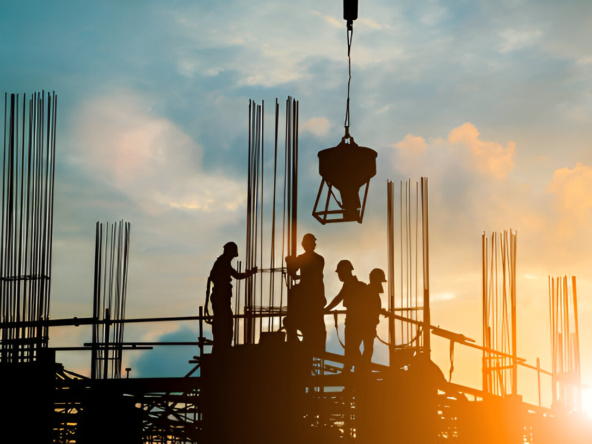Real estate development is one of the most rewarding yet complex industries, where the blend of strategy, financial planning, and on-the-ground construction work can determine the success or failure of a project. Whether you’re embarking on your first development project or looking to refine your approach to future projects, understanding the ins and outs of the process is essential.
This in-depth guide will take you through every stage of the real estate development journey, from identifying opportunities to completing construction and launching a successful property. We will explore the critical steps involved in residential, commercial, and mixed-use developments, and provide practical insights into how to navigate the challenges that arise at each stage. By the end of this guide, you’ll be equipped with the knowledge and strategies to manage your projects efficiently and maximize profitability.
1. Introduction to Real Estate Development
Real estate development is the process of creating value through the construction or renovation of buildings or other properties. This section will define real estate development and explain the different types of development, such as residential, commercial, and mixed-use projects. Understanding these different types will help you identify which area of development aligns with your goals and expertise.
- Defining Real Estate Development: What it is and the key players involved.
- Types of Real Estate Development: Residential, commercial, mixed-use, and industrial developments.
- Why Real Estate Development Matters: Economic impact and the role of development in urbanization and growth.
2. Conducting Market Research & Site Selection
The first step in any successful development project is identifying the right opportunity. This involves conducting thorough market research and selecting a site that fits your project’s vision, demand, and financial goals.
- Market Research: How to analyze market trends, demographics, competition, and local economic conditions to identify demand.
- Site Selection: Choosing a location based on zoning laws, accessibility, proximity to amenities, and future growth potential.
- Feasibility Studies: Understanding the costs, risks, and potential returns of a project before investing.
3. Securing Financing for Real Estate Projects
Once you’ve selected your site and identified the project’s potential, securing financing is the next critical step. This section will cover the different financing options available to developers and the process of obtaining funds to move forward.
- Types of Financing: Bank loans, private investors, venture capital, crowdfunding, and government loans.
- Financial Models: How to create pro formas, cash flow projections, and budgets to secure financing.
- Investor Relations: How to attract and negotiate with investors, and understanding their expectations.
- Risk Management: Identifying potential risks to your financial projections and preparing mitigation strategies.
4. Legal and Regulatory Considerations
Navigating the legal landscape is a critical part of the development process. Zoning laws, building codes, environmental regulations, and permits are all factors that can affect the timeline and feasibility of a project. In this section, we’ll break down the key legal considerations every developer must understand.
- Zoning Laws & Permits: How to research zoning restrictions and obtain necessary permits for construction.
- Building Codes & Safety Regulations: Ensuring that your project complies with local safety standards and building codes.
- Environmental Regulations: Understanding environmental impact assessments, sustainability regulations, and green building certifications.
- Navigating Local Government: Working with local councils, planning departments, and regulatory bodies to ensure compliance.
5. Design and Planning: Creating a Vision
The design and planning phase is where your vision for the development begins to take shape. From architectural design to planning the layout of the space, this phase will set the tone for the entire project.
- Hiring Architects & Designers: How to select a team of architects, engineers, and designers to bring your vision to life.
- Designing for Functionality & Aesthetics: Balancing form and function to meet market demand, enhance property value, and ensure livability.
- Building Information Modeling (BIM): How digital tools like BIM can streamline design and planning, ensuring accuracy and efficiency.
- Site Planning: Efficiently utilizing space while considering factors like traffic flow, utilities, and landscape design.
6. Choosing Contractors & Managing Construction
After the planning phase, it’s time to choose the right contractors to bring the project to life. Choosing experienced and reliable contractors is crucial to ensuring quality construction and keeping the project on schedule.
- Selecting Contractors & Subcontractors: How to vet and choose general contractors, subcontractors, and other construction teams.
- Construction Scheduling: Creating a detailed timeline for each phase of construction, including design, permits, and final inspections.
- Managing Construction Risks: How to manage construction delays, cost overruns, and workforce issues.
- Construction Project Management: Using software and tools to track progress, quality control, and communication.
7. Risk Management and Problem-Solving During Construction
Construction projects are often filled with unforeseen challenges, ranging from weather delays to supply chain disruptions. This section focuses on how to handle these issues effectively and stay on track.
- Identifying Common Risks: Construction delays, cost overruns, legal disputes, and safety concerns.
- Risk Mitigation Strategies: Developing contingency plans, obtaining insurance, and managing risk through contracts.
- Problem-Solving Techniques: How to resolve issues as they arise and ensure minimal disruption to the timeline and budget.
8. Marketing and Leasing/Selling the Property
Once construction is complete, the next step is to ensure the property is sold or leased to tenants. This section covers effective marketing and sales strategies to help developers successfully launch the property.
- Real Estate Marketing Strategies: Creating a brand for your development, utilizing digital marketing, and working with agents.
- Leasing vs. Selling: Understanding when to sell properties versus holding them and leasing them for long-term returns.
- Property Management: How to effectively manage and maintain your development, whether selling or leasing.
9. Final Inspections and Handover
Before officially launching your project, final inspections and handovers are required. This section discusses the last steps in the construction process to ensure everything is in place.
- Final Inspections: What to expect during inspections and how to ensure compliance with building codes and safety regulations.
- Project Handover: How to prepare for the handover of the property to clients, investors, or tenants, including documentation and warranties.
10. Post-Construction: Maintaining and Monitoring the Property
The work doesn’t end when the construction is completed. Ongoing maintenance and monitoring of the property are essential for long-term success and profitability.
- Property Management After Completion: Maintaining the property, handling tenant issues, and ensuring the property remains in top condition.
- Sustainability and Energy Efficiency: Ensuring the property remains sustainable and energy-efficient through smart building technologies and green practices.
- Long-Term Investment Strategies: How to plan for the future of the property, whether through renovations, expansions, or selling at the right time.
11. Conclusion: Building a Successful Real Estate Development Career
This guide concludes by summarizing the key steps in real estate development and offering advice on how to build a successful career in the industry. With a solid understanding of the development process, you can move forward with confidence and create projects that deliver lasting value.
- Building Your Team: Understanding the importance of a strong network and building relationships with key professionals.
- Staying Ahead of Market Trends: How to stay informed about market conditions and adjust your strategy to remain competitive.
- Lessons Learned: Common mistakes developers make and how to avoid them.




